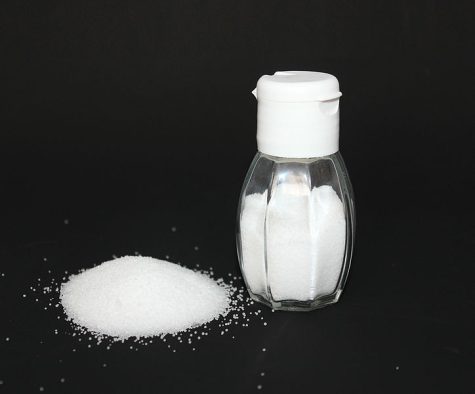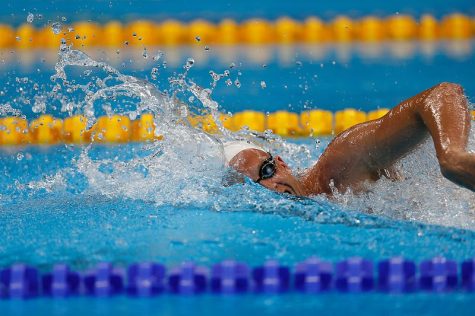POTS in Athletes
Imagine if every time you stood up and tried to walk, you passed out. Read this article to find out what it’s like to live with that daily.
Identify the image source as Atlantic Training and link that text to http://www.atlantictraining.com/shop/c-drugs-and-alcohol-99-1.html on the same page that uses this image., CC BY-SA 3.0

Postural orthostatic tachycardia syndrome (POTS) is a type of autonomic disfunction. It is a blood circulation disorder that is characterized by having your heart rate increase by 40 or more beats when transitioning from a sitting to standing position. For someone with POTS, lightheadedness, fainting, and rapid heartbeat can be caused by change in position. These symptoms can be relieved by laying down again. It is a chronic condition that most commonly affects women between the ages of 15 and 50. It can last anywhere from a few years to a lifetime. With POTS, the autonomic nervous system doesn’t work how it should. According to kidshealth.org, when a person stands up, the autonomic nervous system tells the blood vessels in their legs to constrict. This prevents blood from collecting in the legs, which allows the brain to get enough blood flow to function properly. When someone has autonomic disfunction, their blood vessels don’t constrict enough, so their isn’t enough blood flow getting to the brain. The body tries to get that blood flowing to the brain by making your heart beat faster. The combination of a racing heart and not getting enough blood flow to the brain is what causes people to feel lightheaded or pass out whenever they stand up.

Since the start of the COVID-19 pandemic, the number of people that have been diagnosed with POTS has more than doubled, according to the washingtonpost.com. There was an estimated 1 to 3 million Americans with POTS before the start of the pandemic. There are at least 1 million more POTS patients due to covid. While the number of patients has drastically increased, the number of experts across the country has stayed the same, which means that already long waiting lists have gotten even longer. The Washington Posts states that the director of the Johns Hopkins Postural Orthostatic Tachycardia Syndrome (POTS) program had a wait list that was about a year long. Since the pandemic, the wait list has increased to over two years. A cardiologist and POTS specialist at Rochester Regional Health said that most cardiology appointments take around 40 minutes. He explains that the complexity of POTS and the overload of patients have increased his average appointment time to between 60 and 80 minutes. POTS is only diagnosed after all other possibilities have been ruled out. This makes the process to get a diagnosis much more difficult because people that show symptoms of POTS will often be misdiagnosed as having anxiety. The article goes on to mention that the average diagnostic delay for POTS patients is almost five years, with most people not getting diagnosed until at least a year after showing symptoms. When you can’t get the right diagnosis, it is very difficult to get treated properly.

Having POTS is especially difficult for athletes, especially at a high competition level. Your body is constantly in fight or flight mode, which means that there is too much adrenaline flowing through your body at the wrong times. According to cronicallysalty.com, the body can’t tell whether or not a situation is dangerous. This causes the body to release adrenaline while you are just trying to complete simple tasks, such as doing the dishes or taking a shower.
Developing POTS can be an overnight occurrence. You’ll be perfectly healthy until one day you can’t even stand up without feeling lightheaded. This diagnosis is especially difficult for athletes that are used to practicing/working out for hours every day, and then all of a sudden you can’t practice, work out, go to school, or even walk. When I first showed symptoms, I was at a swim meet. I felt like I was having a panic attack because my heart just started beating really fast and I felt like I was getting really overheated. I tried to swim one of my events, and I couldn’t feel my arms or legs during or after the race. When I was warming down afterwards, I passed out in the water and one of my friends had to pull me to the wall, where people were waiting to pull me out. I had never experienced anything like that until that moment. This is how most people find out they have POTS. It is a very confusing disease and even some doctors don’t fully understand it. None of the doctors knew what was happening because all of my test results came out perfectly. All of my blood work was better than perfect. My heart was 100% healthy. Thankfully, my mom knew about POTS, so my diagnostic process only took a couple weeks.

While POTS is a physical condition, it also affects people mentally. It causes cognitive disfunction, often referred to as “brain fog.” According to dysautonomiainternational.org, brain fog is seen worldwide in POTS patients, but it is still very misunderstood. Brain fog is described by this article as “difficulty thinking, concentrating, or paying attention; trouble remembering things; cloudy or fuzzy feeling in head; and having problems finding the right words.” While this is part of the diagnosis, POTS can also affect people mentally in other ways. It is very difficult to go from being an elite, nationally ranked, steadily improving athlete to struggling to even stand up. It is very frustrating to basically have to start over from scratch. Thankfully, POTS is becoming more recognized by coaches, especially in USA swimming. Coaches are becoming more educated on this issue as it becomes more common.






